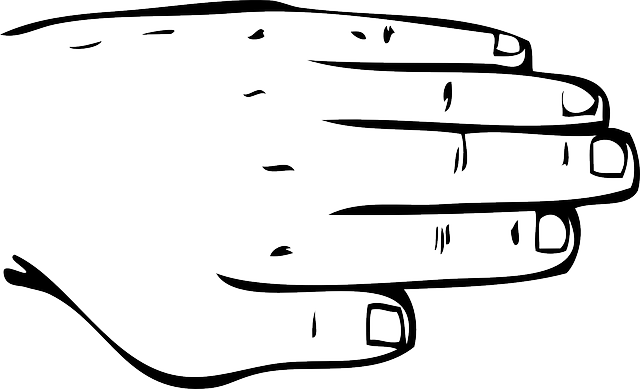Skin tags, harmless growths caused by collagen buildup, can be removed by a dermatologist using safe methods like excision, cryosurgery, or laser treatments. They diagnose, categorize, and tailor these procedures to individual needs, ensuring precision and comfort. After removal, proper care includes keeping the area clean, dry, and avoiding irritation to ensure successful healing. A Dermatologist for skin tags is your expert ally in addressing these benign growths effectively and risk-free.
Looking to get rid of unsightly skin tags? A medical-grade dermatologist is your best ally. Skin tags, those small, soft growths on the neck, armpits, or hands, are usually harmless but many seek professional help for their removal due to cosmetic concerns.
This article explores everything you need to know about skin tags, with a focus on understanding their causes and types. We delve into the crucial role a dermatologist plays in ensuring safe removal, examining various techniques and treatments used. Learn essential post-removal care guidelines for optimal results. Find your solution with a Dermatologist for skin tags today!
- Understanding Skin Tags: Causes and Types
- The Role of a Dermatologist in Safe Removal
- Professional Care: Techniques and Treatments
- Post-Removal Guidelines for Optimal Results
Understanding Skin Tags: Causes and Types
Skin tags, also known as acrochordons, are small, soft skin growths that typically appear as hanging or dangling pieces on various parts of the body. They are common and usually harmless, but many people seek a dermatologist for skin tags removal due to aesthetic concerns or discomfort. Understanding their causes is essential when considering the best course of action.
There are several types of skin tags, often categorized by their location. The most typical type is found on the neck or underarms, known as acrochordons. They can also occur on the face, hands, and legs, sometimes in clusters. Skin tags develop when collagen and other proteins accumulate in a small cluster of cells, causing a tiny bump. While they are usually unaccompanied by any health issues, some individuals may experience irritation or discomfort, especially if they rub against clothing or jewelry. A dermatologist for skin tags removal can offer professional care, including safe excision methods, to address these cosmetic concerns effectively.
The Role of a Dermatologist in Safe Removal
When it comes to the safe removal of skin tags, a dermatologist plays a crucial role in ensuring optimal results and minimizing risks. A dermatologist for skin tags is a medical professional specialized in diagnosing, treating, and managing skin conditions, including benign growths like skin tags. Their expertise lies in identifying various types of skin tags and determining the most suitable removal method based on their size, location, and individual patient needs.
Unlike over-the-counter remedies that may cause irritation or complications, a dermatologist employs safe and effective procedures such as freezing (cryosurgery), surgical excision, or laser treatments. They prioritize patient safety and comfort throughout the process, offering personalized care to address any concerns or questions regarding skin tags removal.
Professional Care: Techniques and Treatments
When seeking a dermatologist for skin tags removal, professional care involves a range of advanced techniques and treatments designed to address these benign growths effectively. A qualified dermatologist will begin with a comprehensive consultation, considering the size, number, and location of the skin tags, as well as any underlying medical conditions that might be contributing factors. This personalized approach ensures that the chosen treatment aligns perfectly with your specific needs.
Among the common methods employed are surgical excision, cryosurgery (freezing), and laser treatments. Surgical excision is a quick procedure where the dermatologist removes the skin tag with a sterile blade or scalpel. Cryosurgery uses liquid nitrogen to freeze and destroy the skin tag, while laser treatments target the blood vessels within the growth, causing it to shrink and fall off. Each technique has its advantages and may be recommended based on the specific characteristics of your skin tags.
Post-Removal Guidelines for Optimal Results
After a dermatologist has removed skin tags, it’s crucial to follow specific guidelines to ensure optimal healing and prevent complications. Firstly, keep the treated area clean and dry; avoid swimming or using hot tubs for at least 24 hours. Gentle washing with a mild soap and cool water is recommended to minimize irritation. Pat the area dry gently without rubbing.
Secondly, apply a thin layer of over-the-counter antibiotic ointment or a dermatologist-recommended product to promote healing and reduce the risk of infection. You may experience some mild swelling or redness, which is normal; however, if these symptoms persist or worsen, contact your dermatologist immediately. It’s also advisable to avoid scratching or touching the treated area to prevent further irritation or potential reinfection.
When it comes to addressing skin tags, seeking professional care from a qualified dermatologist is paramount. Their expertise in dermatology ensures safe and effective removal techniques tailored to your specific needs. By understanding the causes and types of skin tags, dermatologists employ advanced methods and treatments for optimal results. Following post-removal guidelines further enhances the process, ensuring your skin remains healthy and aesthetically pleasing. For anyone considering a dermatologist for skin tags, this comprehensive guide highlights the importance of professional care for achieving desirable outcomes.
